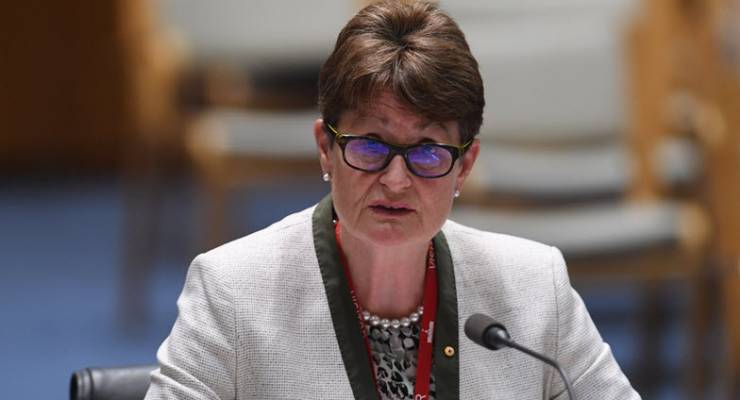
Never has a single industry seen such a stunning repudiation of its activities by shareholders as banking has seen in the past week.
Up to yesterday, Westpac’s 64.16% vote against its remuneration report last week was the largest “no” vote against any company’s remuneration report since the 66% vote against that of the Sol Trujillo-era Telstra in 2007 — including the large holding of the Future Fund in Telstra. ANZ had taken a smaller, but still “first strike” vote of 34% against its remuneration report. Then NAB blew away all previous records with an 88.1% vote against its report during a lengthy and angry annual meeting.
But there’s one missing — why didn’t the Commonwealth, arguably the worst of the lot, also cop a hiding? The CBA’s AGM was in November and saw the remuneration report carried with a 92% positive vote. That was despite the long running Austrac money-laundering scandal, which cost the bank well over $700 million, plus revelations at the royal commission about charging dead people fees for no service, on top of a variety of other scandals over the years. It seems shareholders in the Commonwealth Bank were more forgiving than those of the other three.
The trio — NAB, ANZ and Westpac — did everything to keep shareholders happy by maintaining dividends at high levels, even though profits were under pressure. But the Commonwealth lifted its payout two cents over the year, removed CEO Ian Narev and several directors earlier this year. And the appearance of chair Catherine Livingstone before the royal commission — which raised doubts about her handling of scandals, happened after the meeting.
Perhaps big shareholders realised they had let the CBA off the hook by cravenly supporting its remuneration report and turned against Westpac, and the NAB, and to a lesser extent, the ANZ, to make up for that lapse in judgement? Or did those extra two cents a share in dividends for CBA shareholders work their magic? Are investors that mercenary?
ANZ chair David Gonski acknowledged the concerns and said he would “work hard” to better align executive pay with shareholder interests. NAB chair Ken Henry — once one of the most astute public service leaders of recent decades, now seemingly almost entirely disconnected from his own shareholders — promised to take shareholder concerns into account in revising the remuneration report, while lamenting the lack of guidance from major institutional shareholders on the topic. But such comments have been heard time and again at bank annual meetings in response to criticism, and the outcome has been similar on each occasion.
These aren’t penny stocks; these are some of the biggest companies in the country, headed by our business elite, which provide the foundation of the financial system. And it’s not as if the issue of executive remuneration has suddenly appeared on the radar of big business. It’s nearly 10 years since the Productivity Commission undertook the inquiry that led to the two-strikes rule, in the midst of community anger about executive salaries that were, in some cases, a hundred times ordinary earnings. But as Upton Sinclair famously noted, it’s enormously difficult for someone to understand something when their salaries depend on not understanding it.









What I can’t understand in all this whole fetid morass of self-indulgent deification of Mammon, was Ken Henry’s alacrity to get down and dirty in that frenzy of pig-swill and shit?
The opioid effect o conscience of bigbuck$?
I assumed that was Ken Henry’s evil twin at the Royal Commission hearings.
” …Ken Henry — once one of the most astute public service leaders of recent decades, now seemingly almost entirely disconnected from his own shareholders… ”
Think that ‘seemingly’ is wrongly placed and that ‘almost’ is unnecessary. “Ken Henry — SEEMINGLY one of the most astute public service leaders of recent decades, now entirely disconnected from his own shareholders ..”
I thought his appearance at the RC was the most offensive of all the CEOs. Haughty is the descriptor I’d choose. How detached was he to be so disdainful towards counsel assisting, Rowena Orr, who had been widely accorded hero status by the crowd.
Maybe he was always a Turnbull – promised much but failed to deliver and ended up a total disappointment.
Couldn’t agree more.
We need a clear formula to determine total yearly remuneration of a CEO expressed as a multiple of the lowest paid bank clerk.
Put to a vote on the floor of the AGM.
Some of his advice to government as a PS suggest that he was not a fan of lumpen aspiration.
His advocacy of GST began with PJK, went through the Feral Abacus until it found a champion in the Rodent.
However his belief in resource tax, esp a RSPT, and the hairy nosed wombat are redeeming factors